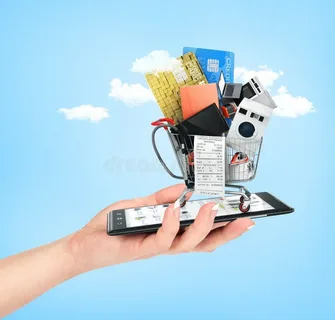What is the Creator Economy?

The Creator Economy refers to the ecosystem where individuals create and distribute digital content—such as videos, blogs, podcasts, and more—often monetizing their efforts through various platforms and tools. In recent years, this sector has gained immense popularity, thanks to the rise of social media platforms, content-sharing websites, and online tools that facilitate creative expression. The Creator Economy enables anyone with a passion, skill, or talent to generate income by sharing their creations with a global audience.
At the heart of the Creator Economy is the idea of self-expression and direct engagement with an audience. Unlike traditional media, which is often produced by large companies and distributed through television or print, creators are now able to connect directly with their followers. Whether it's a YouTuber sharing tutorials, a podcaster discussing niche topics, or an Instagram influencer promoting brands, these individuals are empowered to build personal brands, attract followers, and generate revenue.
Monetization in the Creator Economy
One of the most appealing aspects of the Creator Economy is the wide range of ways creators can monetize their content. While the specific methods vary by platform, several options have become increasingly popular:
- Ad Revenue: Platforms like YouTube offer creators the opportunity to earn money through ads that appear before or during their videos.
- Brand Partnerships: Many creators collaborate with companies to promote products or services, often in the form of sponsored content.
- Subscription Services: Creators can set up subscription-based services (like Patreon or OnlyFans) where fans pay for exclusive content.
- Merchandising: Selling branded merchandise, such as t-shirts, mugs, and other products, is another common way creators can earn money.
- Affiliate Marketing: Creators can earn a commission by promoting other people's products and services through affiliate links.
These monetization methods give creators the flexibility to choose how they want to make money, whether it's through one stream or a combination of multiple channels.
The Growth of the Creator Economy
The Creator Economy has seen explosive growth in recent years. As more individuals recognize the potential of turning their passions into profits, the number of creators in various fields has surged. Platforms like TikTok, YouTube, Instagram, and Twitch continue to expand, giving creators more tools to grow their audiences and connect with fans. At the same time, companies are increasingly recognizing the value of influencer marketing, which further supports the growth of this economy.
Key Platforms Fueling the Creator Economy
Several platforms have been integral in fueling the rise of the Creator Economy. Each of these platforms serves as a unique space for creators to share content and engage with followers:
- YouTube: One of the largest platforms for video creators, YouTube provides a space for monetization through ads, sponsorships, and Super Chats.
- Instagram: Known for photo and short-form video content, Instagram allows creators to promote products, partner with brands, and earn revenue through features like Instagram Shopping.
- TikTok: The short-video platform has become a sensation, offering creators opportunities for viral content and monetization through brand deals and live gifts.
- Twitch: Primarily focused on gaming content, Twitch allows creators to earn through subscriptions, donations, and ads.
- Patreon: A subscription-based platform that enables creators to offer exclusive content to their paying fans.
Challenges and Opportunities in the Creator Economy
While the Creator Economy presents numerous opportunities, it is not without its challenges. Creators must navigate ever-changing algorithms, platform policies, and competition in a crowded market. Additionally, building and maintaining an audience requires consistent effort and engagement. However, the Creator Economy also offers flexibility and the chance for creators to diversify their income streams, making it an attractive option for many.
The Future of the Creator Economy
As technology continues to advance, it’s likely that the Creator Economy will evolve in new and exciting ways. We may see the rise of virtual creators (such as AI-generated influencers) and further integration of augmented reality and virtual reality. The Creator Economy is not just about creating content—it’s about building communities, establishing brands, and finding innovative ways to monetize creativity.
Conclusion
The Creator Economy has transformed the way we think about work and creative expression. By allowing individuals to build personal brands, engage directly with audiences, and generate income from their passions, it has opened up new possibilities for entrepreneurs in the digital age. As the economy continues to grow, creators will play an even more central role in shaping the future of media and entertainment.
- Arts
- Business
- Computers
- Giochi
- Health
- Home
- Kids and Teens
- Money
- News
- Recreation
- Reference
- Regional
- Science
- Shopping
- Society
- Sports
- Бизнес
- Деньги
- Дом
- Досуг
- Здоровье
- Игры
- Искусство
- Источники информации
- Компьютеры
- Наука
- Новости и СМИ
- Общество
- Покупки
- Спорт
- Страны и регионы
- World


